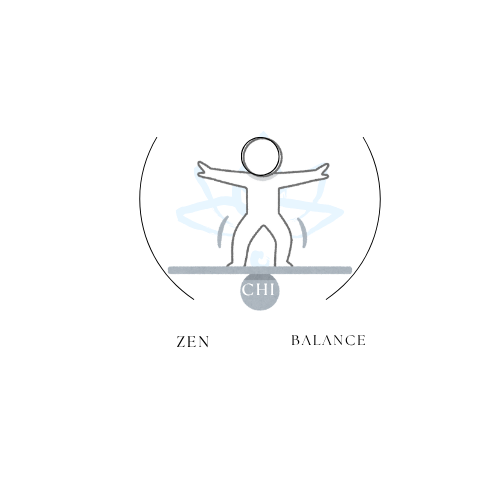
Energy Balance Myths Debunked for Sustainable Nutrition
Share
Updated on: 2025-10-21
Table of contents for energy balance guide
- Energy balance overview and key definitions
- Step-by-step guide to calculate your energy balance
- Practical tips to maintain energy balance
- FAQs about energy balance
Energy balance overview and key definitions
Energy balance describes the relationship between the energy you take in and the energy you use. Many people also call it energy equilibrium or calorie balance. When intake and use are similar, your energy balance may be close to neutral. When intake is higher than use, the balance tilts positive. When use is higher than intake, the balance tilts negative. This simple idea shapes how the energy balance equation in nutrition is discussed in everyday life.
At the center of energy balance is your basal metabolic rate (BMR). BMR is an estimate of the energy your body may use at rest for essential functions. It is one part of your overall daily energy use, which can also include movement, work, and other activities. Many people find it helpful to compare BMR, daily activity, and intake to see how these pieces relate to their goals.
Because situations differ, it may be helpful to focus on trends rather than single days. A weekly view can feel calmer and more informative. If you track intake and activity with reasonable care, you can review your energy balance over time and consider whether any gentle adjustments feel appropriate for you. For additional reading and updates, you may visit the Blog.
Step-by-step guide to calculate your energy balance
Step 1: Clarify your aim and time frame
Begin by clarifying what you would like to understand about your energy balance. You may wish to simply learn your typical intake compared to use. You might also be curious about energy balance for weight loss, weight stability, or weight gain. Choosing a calm, realistic time frame—such as two to four weeks—can help you collect enough information without feeling rushed.
Step 2: Estimate your basal metabolic rate (BMR)
Your basal metabolic rate is an estimate of energy use at rest. Many people use a common formula to approximate it, though any estimate is still a starting point. Calculators can provide a quick number based on details such as age, sex, height, and weight. Because BMR can vary, it may help to view it as a range rather than a precise figure.
Step 3: Account for daily activity
Daily energy use goes beyond BMR. It may include walking, chores, exercise, and work. Some people multiply BMR by an activity factor to approximate their total daily energy use. Others prefer to use step counts or activity logs to create a personal estimate. A consistent method is more important than a perfect one. Over time, your own data can help you fine-tune the estimates.
Step 4: Track intake with care
Choose a simple method to note what you consume. You might write short notes, use a tracking app, or measure some portions for a few days to calibrate your eye. Many people find that honest, non-judgmental notes support better insight. If you are using a digital tool, you may also wish to review its Privacy Policy so you feel comfortable with how your information is handled.
Step 5: Review the energy balance equation
The energy balance equation in nutrition can be summarized as “energy in” compared with “energy out.” When “energy out” is higher than “energy in,” a caloric deficit is present. When “energy in” is higher, a caloric surplus is present. If the two are similar, balance may be neutral. Looking at your tracked intake alongside your BMR and activity estimate may help you see where your current balance sits. This perspective can also inform your approach to energy balance for weight loss, stability, or gain—always at a pace that feels respectful to you.
Step 6: Monitor trends and adjust gently
Consider reviewing weekly averages rather than individual days. Small shifts—such as adjusting portion sizes, planning an extra walk, or pausing to notice hunger and fullness—may influence your energy balance. Preferences and routines matter. If a change feels sustainable and kind to your daily life, it may be easier to keep over time.
Step 7: Recalculate as life changes
Energy needs can change with new schedules, different activity levels, or shifts in body composition. It may be helpful to revisit your BMR estimate and activity assumptions from time to time. A brief check-in every few months can keep your numbers aligned with your current routine.
Practical tips to maintain energy balance
- Keep it simple. A basic log and a consistent method often work as well as complex tools.
- Think in ranges. View your BMR and activity as estimates rather than exact values.
- Use weekly averages. They can smooth out day-to-day variability and reduce stress.
- Make gentle changes. Small, steady shifts often feel more comfortable over time.
- Stay flexible. If your schedule changes, your energy balance can adapt with it.
- Consider meal patterns. Regular timing may support steadier appetite cues and tracking.
- Include enjoyment. Satisfaction with meals can support consistency.
- Plan for social moments. A flexible mindset can help you return to your usual pattern with ease.
- Be kind to data gaps. If you miss a day, simply continue. Trends matter more than perfection.
- Reflect monthly. Brief check-ins can help you notice what is working and what you may wish to refine.
If you would like to learn more about our approach and values, you may visit the About page. If questions arise while you explore your numbers, you are welcome to reach out through Contact.
FAQs about energy balance
What is energy balance and why is it important?
Energy balance is the relationship between the energy you consume and the energy you use. It is often called energy equilibrium or calorie balance. Many people find it helpful because it offers a clear, neutral way to observe how daily choices relate to long-term trends. Understanding this balance may support thoughtful planning without strict rules.
How do I calculate my energy balance to lose weight?
First, estimate your basal metabolic rate, then consider your daily activity to approximate total energy use. Track your intake for at least one to two weeks using a consistent method. Compare your average intake to your estimated use. If your intention is to create a caloric deficit, you may consider small, manageable changes and review progress over time. For ongoing education and gentle tools, you can visit the Home page to explore available resources.
What affects basal metabolic rate?
Several factors may influence BMR, including age, sex, body size, and body composition. Changes in routine, sleep, and stress can also relate to overall energy use. Because there is natural variability, BMR estimates are best treated as guidelines rather than fixed numbers.
What does a caloric deficit mean in simple terms?
A caloric deficit means your estimated energy use is greater than your energy intake over a given period. In the context of the energy balance equation, this reflects a negative balance. Observing averages over time can provide a clearer view than focusing on a single day.
Note: This article is for general information only and is not a substitute for individualized guidance. Please consider your personal circumstances and preferences when interpreting any estimates or examples.

I'm a passionate curator at Zen Chi Balance, dedicated to spreading calm, harmony, and mindful living through faith-inspired lifestyle products. I help craft meaningful experiences for our global community of mindful shoppers.
The content provided is for informational and inspirational purposes only. It is intended to encourage personal growth, mindfulness, and balance in daily life. Zen Chi Balance does not provide medical, legal, or professional advice. For specific concerns or guidance, please consult a qualified professional. Visit us at www.zenchibalance.com for more inspiration and resources.
